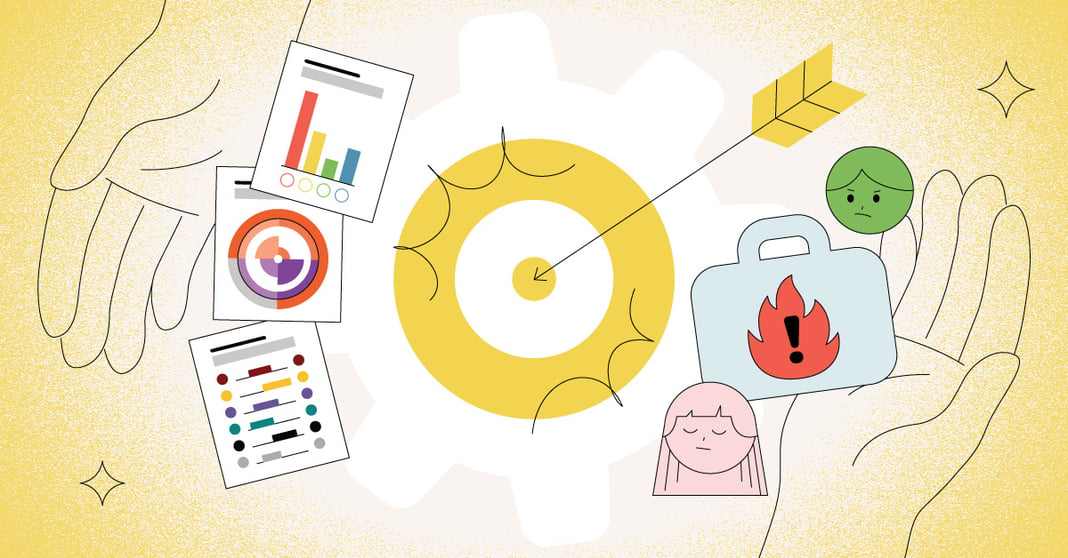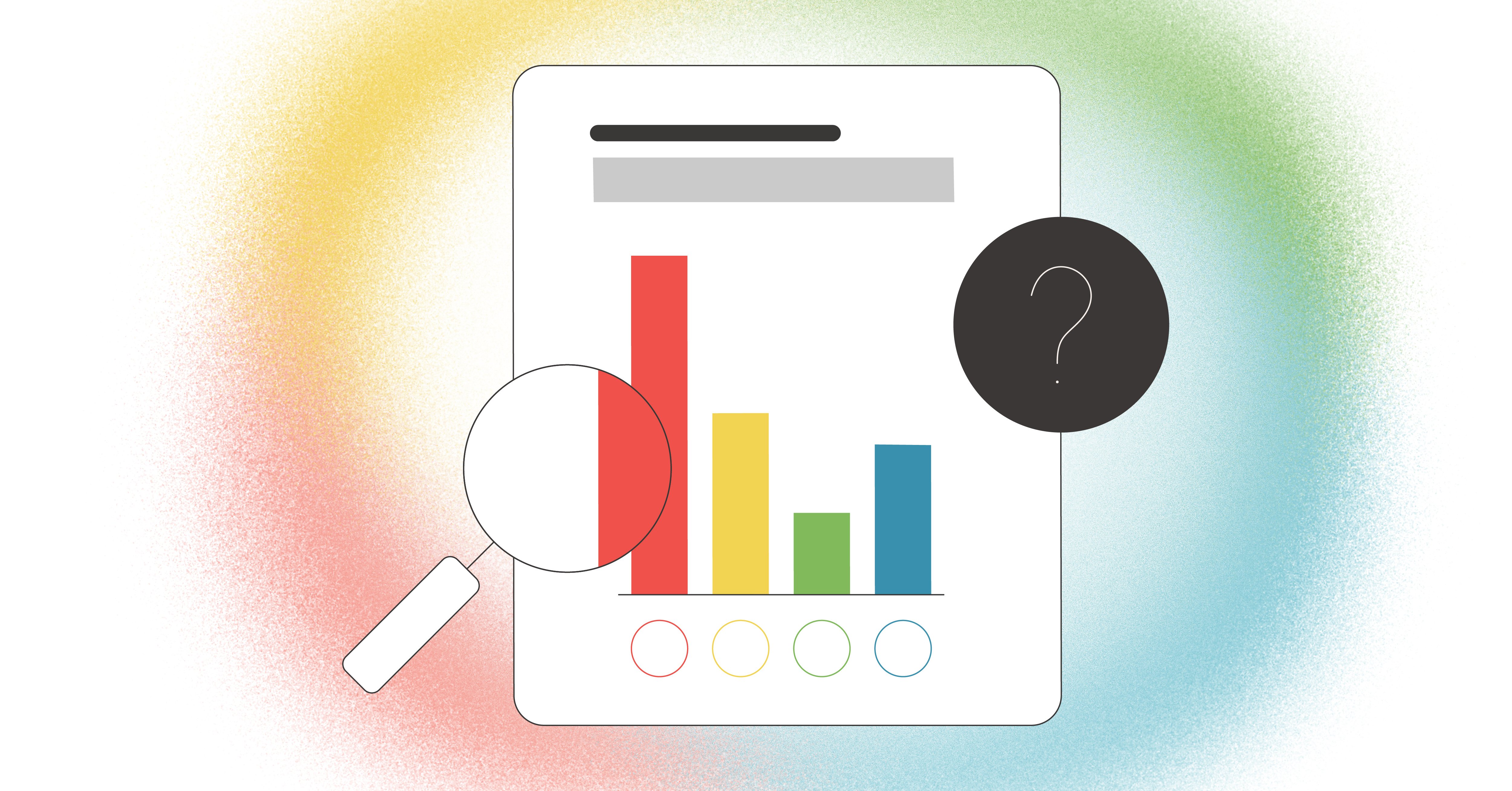
If your company struggles with hiring the right people, engaging teams, and retaining talent, there’s a surprisingly practical solution for all three. These issues can be addressed by simply understanding your people better. To do that, you need the right tools.
A multi-science suite of assessments can offer the insights needed to find, engage, and retain a happy, talented workforce. Assessments can provide awareness of employee behavior, motivation, emotional intelligence, skills, and ways of thinking.
Developing these areas of opportunity can not only help solve immediate problems but also foster growth, enhance team dynamics, and boost overall job performance. Here’s how your organization can start solving business challenges with assessments.
The Challenge: Hiring Mismatches
Managers stated that they hire the wrong person in 74% of cases.
Finding the right person for the right job is crucial for long-term business success. Individuals influence the people around them, not just through their work but through their behavior. If their skills aren’t a good match to the job’s needs, it can be an added challenge to correct their mistakes while finding a better fit.
The first step to avoiding a hiring mismatch is to fully understand the job at hand. What are the key responsibilities of the role? Who will the role interact with most in the organization? What skills are necessary for success in the job, and which would be helpful, if not imperative? How will you develop that role in the future?
“Very often, organizations don’t have clarity about what they’re actually looking for in a role,” said Lindsey Weigle, Managing Partner at Bluewater Advisory. “Instead of only using a static job description, you need to ask what are the actual priorities of the role? What actually matters the most? What are the skills the candidates need to have? Doing that upfront work helps to gain clarity quickly.”
All of those questions can be answered with an assessment tool.
The Solution: Tailored Insights For Your Team
Using assessments and processes like benchmarking will help ensure job fit and satisfaction. Assessments can also help develop your organization’s talent pipeline.
“The right assessment lets leaders uncover talent they might have missed,” shared Chris Young of The Rainmaker Group. “I worked with a manufacturing company in Indiana that sought to improve their sales team’s performance. When we deployed the TriMetrix® HD assessment and dug into its insights, we realized that the temporary employee working as the front-desk receptionist had assessment scores that lined up nicely with a new role, that of an account manager on the sales team. She happily accepted and thrived in that new role.”
It didn’t stop there: “The same thing happened with an employee on their welding team,” Young told us. “That person had applied previously for a sales role but didn’t have the requisite college degree, so they were not considered further. Because the sales manager had confidence in the assessments we used, they then made an exception for this candidate and hired them into an account manager role. That was 12 years ago. The entrepreneur welder has since moved on to multiple other sales roles with increasing responsibilities and has brought our services into those organizations.”
Assessments helped place people in suitable positions when they’d been overlooked in the past. This saved onboarding costs and helped invest internally, developing workers and advancing their career skills along with the organization.
The Challenge: Receding Employee Retention
46% of employees plan to look for work in the next three months.
Employee retention should be a top concern for all organizations. Top talent has specific workplace needs, and if you’re not meeting those needs, they’ll move on.
Replacing your team members is a costly endeavor; a common estimate is about 50 percent of that employee’s annual salary. Beyond the financial cost, losing team members also affects morale, long-term projects, and team synergy.
The Solution: Tailored Insights For Your Team
Using assessments helps create an environment that draws top performers. It demonstrates to workers that the organization is invested in their development while providing tools for better communication and collaboration.
Assessments uncover deep insights into employees’ behavior styles, motivators, emotional intelligence, skills, and ways of thinking. These insights help organizations to better align with their work. When employees are well-adjusted, supported, and engaged in their work and on their team, they are more likely to stay in their roles.
Another benefit of assessments is that they enable autonomy. When leaders better understand their employees’ skills, behavior, and capacity, they can trust them to complete their work in the best way for them. Autonomy is key for retention: Forbes reports that 24% of people say they stay at their job because they have autonomy and independence, and 60% of workers report they are more productive when they have greater autonomy.
Weigle weighed in: “We often conflate ‘Can this person be trusted with this task?’ with ‘Will this person complete the task how I would?’ Motivation is incredibly powerful, and if we’re looking at others through only the lens of our own without considering theirs, we’re making a mistake. Trust goes both ways.”
TTI Success Insights' assessments help with employee retention by providing deep insights into employees' behavioral styles, motivators, and emotional intelligence. These insights enable organizations to better align roles with individual strengths, fostering job satisfaction and engagement. When employees feel understood, valued, and positioned in roles that match their natural talents, they are more likely to remain committed to the organization.
Additionally, the assessments can identify opportunities for development and leadership growth, promoting a culture of continuous improvement and reducing turnover. This holistic approach strengthens loyalty and retention.
The Challenge: Declining Workplace Engagement
Employee engagement has fallen to the lowest point in a decade.
Workplace engagement is a top-of-mind issue for most organizations and with good reason: it can make or break a workplace’s culture. While the statistics might be dire, it doesn’t mean your workplace has to be. Your organization can lead the efforts to re-engage employees and give your teams everything they need in their working environment.
When people are not connected to their work or engaged in their processes, it shows through the output. On the positive side, when people feel engaged and supported in their work, it makes an incredible difference in productivity, happiness, retention, and more. Gallup reports that engaged employees are 23% more profitable. That’s almost a quarter boost!
The Solution: Creating Foundational Understanding
Engagement becomes easier when you really understand your team and their needs. That understanding extends to support the entire organization and can play a huge part in reducing problems like conflict.
“I just wrapped up coaching with two individuals who I genuinely thought might fist-fight each other during our first session,” shared Weigle. “Other employees were picking sides, lines of communication were breaking, and the tension was impacting engagement in a brutal way.”
Assessments helped to close the gap between the two individuals and the organization at large. “Over the course of coaching, we utilized Talent Insights to help them understand each other, and then individually we coached them around TriMetrix® EQ to help them see where they were standing in their own way in the working relationship,” said Weigle. “Engagement comes from a multi-science perspective; one assessment can bring clarity but multiple assessments working together is really helpful and illuminating.”
The results spoke for themselves: “I am happy to report that after only three months, they are in such a better place,” Weigle shared. “Having the right tools in place helped both individuals re-engage while supporting the rest of the team as well.”
Start Solving Business Challenges with Assessments
The right tools help people's problems turn into opportunities for increased engagement, retention, and talent acquisition. By leveraging multi-science assessments, businesses can gain a deeper understanding of employee behavior, motivations, and skills.
With the right assessments and coaching, your organization can create a more engaged, satisfied, and high-performing workforce that drives success from within.
Interested in using assessments in your organization? TTI can help.



